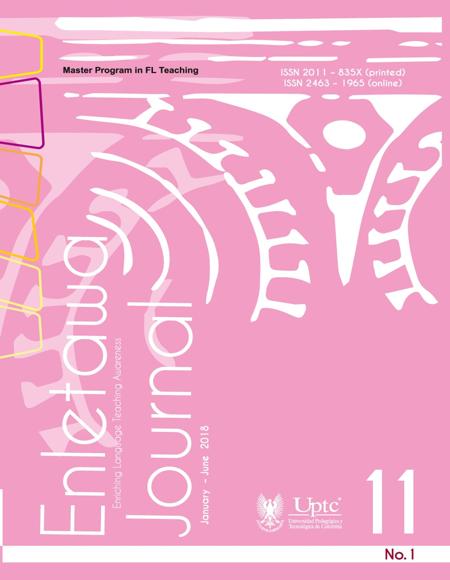Rastreando la teoría detrás de mi experiencia docente en un instituto privado de inglés

Resumen
El siguiente artículo presenta una reflexión sobre la conexión entre la teoría y la práctica en un instituto privado de inglés en el que los estudiantes siguen siete etapas de estudio para aprender una lección. El objetivo principal de la investigadora, una docente de inglés en servicio, fue analizar los principios teóricos que subyacen cada una de las siete etapas de estudio, mediante el análisis de las teorías y enfoques del aprendizaje y la enseñanza de inglés que guiaron la preferencia de la institución por dichas etapas para el aprendizaje del idioma. Con el fin de presentar una reflexión informada por la teoría y su aplicación en la práctica, autores especializados tales como Richards y Rodgers (1993) o Harmer (2013) son mencionados a lo largo del artículo. Las reflexiones sobre los beneficios y las desventajas que los estudiantes reciben al usar dichas teorías o enfoques en sus clases así como un análisis crítico del desarrollo profesional de la docente investigadora en los pasos dirigidos por ella van a ser discutidos a lo largo del presente artículo.
Palabras clave
Desarrollo profesional, Relación Teoría- Práctica, Docentes de Idiomas, Enseñanza Reflexiva
Citas
Brown, H. (1994). Teaching by principles an interactive approach to language pedagogy. New Jersey: Prentice Hall Regents.
Canale, M., and Swain, M. (1980). Theoretical bases of communicative approaches to second language teaching and testing. Applied linguistics, 1(1), 1-47.
Cárdenas, M. L. (2002). Teacher research as a means to create teachers’ communities in in-service programs. HOW, 9(2), 1-6.
Castañeda-Londoño, A. (2017). Exploring English teachers’ perceptions about peer-coaching as a professional development activity of knowledge construction. HOW, 24(2), 80-101.
Clarke, M. A. (1994). The dysfunctions of the theory/practice discourse. TESOL Quarterly, 9-26.
Cook, V. (2008). Second language learning and language teaching. London: Hodder Education.
Cook, V., and Singleton, D. (2014). Key topics in second language acquisition. Bristol: Multilingual Matters.
DeKeyser, R. (2007). Skill acquisition theory. Theories in second language acquisition: An introduction. Retrieved from https://onlinelibrary.wiley. c o m / d o i / p d f / 10.1002/9781405198431. wbeal0311
Dewey, J. (1933). How we think. Wisconsin: University of Wisconsin Press.
Farrell, T. (1998). Reflective teaching: The principles and practices. Forum, 36(4), 4.
Harmer, J. (2013). The practice of English language teaching (4th ed.). Harlow: Longman.
Johnson, K., and Golombek, P. (2002). Teachers’ narrative inquiry as professional development. London: Cambridge University Press.
Krashen, S. (1982). Child-adult differences in second language acquisition. Series on issues in second language research. Newbury: House Publishers, Inc.
Krashen, S. (1985). The input hypothesis: Issues and implications. London: Addison-Wesley Longman Ltd.
Kumaravadivelu, B. (2003). Beyond methods: Macrostrategies for language teaching. Yale: Yale University Press.
Lightbown, P. M. (2008). Transfer appropriate processing as a model for classroom second language acquisition. Understanding Second Language Process, 27-44.
Lightbown, P. and Spada, N. (2013). How languages are learned (4th ed.). Oxford: Oxford University Press.
Long, M. (1983). Native speaker/nonnative speaker conversation and the negotiation of comprehensible input. Applied linguistics, 4(2), 126-141.
Mendieta-Aguilar, J. A. (2012). Blended learning and the language teacher: A literature review. Colombian Applied Linguistics Journal, 14(2), 163-180.
Ortega, L. (2007). Meaningful L2 practice in foreign language classrooms: A cognitive-interactionist SLA perspective. Practice in a second language: Perspectives from applied linguistics and cognitive psychology, 180-207.
Richards, J. C. (2008). Second language teacher education today. RELC journal, 39(2), 158-177.
Richards, J. C., and Lockhart, C. (1996). Reflective teaching in second language classrooms. Cambridge: Cambridge University Press.
Richards, J., and Rodgers, T. (1993). Approaches and methods in language teaching (9th ed.). Cambridge: Cambridge University Press.
Richards, J. C., and Schmidt, R. W. (2010). Longman dictionary of language teaching and applied linguistics. New York: Routledge.
Smith, M. S. (1993). Input enhancement in instructed SLA: Theoretical bases. Studies in second language acquisition, 15(2), 165-179.
Stern, H. H. (1994). Fundamental concepts of language teaching (8th ed.). Oxford: Oxford University Press.
Ur, P. (1993). Teacher learning. ELT Journal, 46(1), 56-61.
Vergara Luján, O., Hernández Gaviria, F., and Cárdenas Ramos, R. (2009). Classroom research and professional development. Profile Issues in Teachers Professional Development, (11), 169-192.
Vygostky, L. (1978). Mind in society, the development of higher psychological processes. Cambridge: Harvard University Press.
White, J. (1998). Getting the learners’ attention: A typographical input enhancement study. Focus on Form in Classroom Second Language Acquisition, 85-113.
Zeichner, K. M. (1983). Alternative paradigms of teacher education. Journal of Teacher Education, 34(3), 3-9.